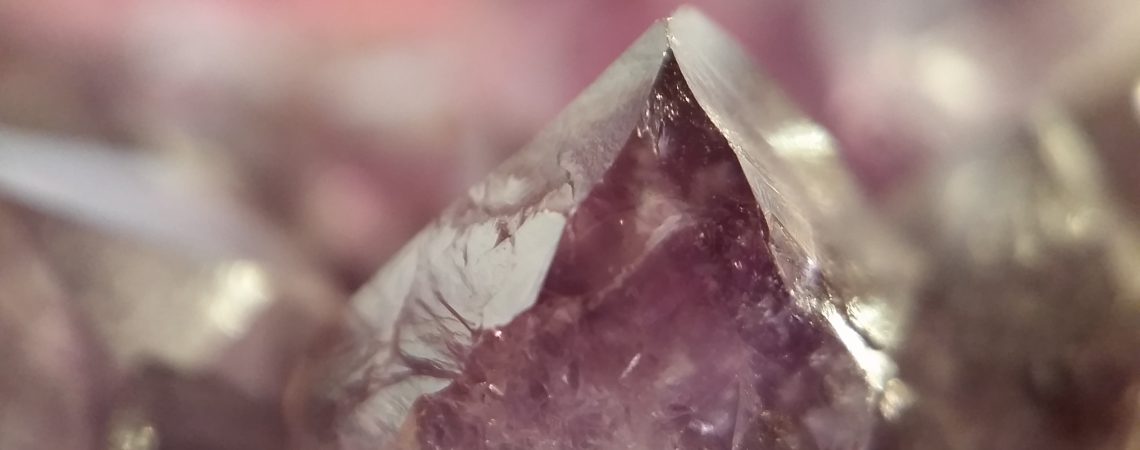
what is a good fielding percentage in baseballthe telescreen received and transmitted simultaneously page number
A strikeout is also known as K in official scorekeeping. Baseball is a game of percentages. Earned run average (ERA) is the most commonly used metric for measuring a pitchers performance. A batter with a BABIP lower than .300 is often thought of as unlucky though batters with below average speed often have BABIPs lower than .300. an affiliate advertising program performed to deliver a means for us to earn commission by linking to Amazon.com and affiliated sites. FIP is expressed numerically the same as ERA. The advent of defensive shifts has affected Range Factor further. Eventually, StatCast's defensive data will make its way to the public sphere on a more widespread basis, and that may change everything. Here are five tips to help you break in your new glove fast: Warm up the glove before you start hitting. Growing up, Ive always had a love for the sport. Rafael Nadal Faces Rankings Threat After French Open, Medvedev and Fritz Look to Continue Strong Clay Form at Mutua Madrid Open, Wells Fargo Championship Returns to Quail Hollow Club in 2023, Tiger Woods Surprises by Talking Liv Golf With Talor Gooch at the Masters, Jurgen Klopp Asks Liverpool Fans to Stop Singing His Chant Until After the Matches. A good slugging percentage is usually considered to be .500 or higher. That, of course, is entire point of defense at the team level. Another way to describe it is walk. Pitchers with high opponent slugging percentage are more victimized by extra base hits and thus are more likely to struggle with ERA. Differing from batting average and ERA, fielding percentage does not appear to be as crucial to winning in baseball and has no clear effect on a team's winning percentage. Players must use good technique to make accurate throws and get on base. The slugging percentage of all opposing batters. It doesnt include badly fielded plays such as ground balls missed by infielders, and great plays such as fly balls caught just over the fence to prevent home runs. Relief pitchers with a high strand rates help the departing starters' ERA. They occur when a baserunner successfully proves his speed by taking off and beating the throw to their destination base. It is calculated by adding a players on-base percentage and their slugging average, both of which indicate the players ability to get on base, their power-hitting potential, and their number of total bases. Overall, knowing when and when not to throw BBs is an integral part of playing effective baseball. ERA- provides a good overview of a pitcher's value. A player may not have the highest batting average in the league, along with fast running abilities, but if they manage to rack up extra bases, which add to their total average, then they can still be one of the best players in their position statistically. As such, it's entirely possible to be a significantly better fielder than someone else who has a higher fielding percentage. . At the college and professional levels, it is about .970 and above. Last season, for instance, the Cubs indeed led all of baseball in DER by a wide margin. This section will show you an updated total each morning. The Inside Edge numbers, in contrast, are easy to communicate in terms that will make sense to the garden-variety fan. On-base percentage (OBP) is a slightly underrated but essential metric in evaluating a baseball players performance. Rankings of Negro League players should consider that Negro League data is not complete. Foul balls truly add an extra element of surprise and excitement to every game, making them one of the most interesting parts of baseball! Sabermetric types don't like this measurement, for several reasons. In baseball, fielding is the act of catching a batted ball and returning it to the infield in order to get an out. The percentage of successful stolen bases against attempts. Therefore, a pitcher with a 95 ERA- has a park-adjusted ERA 5 percentage points better than their leagues ERA. On its stat pages, you can look at a team's DER on fly balls, ground balls, liners, and pop-ups. One method in doing so is fielding percentage. The calculation for BABIP is (H-HR)/(AB-K-HR+SF). To illustrate this concept, lets consider two hypothetical pitchers: One with 10 earned runs in 20 innings pitched gives them an ERA of 4.50, while another who has allowed only 5 earned runs in 25 innings gives them an ERA of 1.80a much more impressive stat! . Batters with a higher home run to fly ball ratio tend to hit more home runs, especially if they also have a high fly ball:ground ball ratio. Unlike pitchers, there's no "normal" baseline for BABIP with hitters, as this can fluctuate greatly. Mizuno B20 Review In 2022 | In-Depth Research of a Coach, Baseball Card Storage Ideas | Organize Your Baseball Cards Best Way. Whether its stretching it from first to third or swiping a bag at second base, stolen bases always inject some life into the game. . Even if youre not playing professional baseball, having an exceptional fielding percentage is essential for anyone who wants to excel in any sport, regardless of skill level or experience level. Eating a healthy diet is also important for athletes, so make sure to include plenty of fruits and vegetables in your meals. Thats not to say that the ability to hit pitches with big drop is obsolete, but amid the sweeper frenzy, the percentage of breaking balls that drop at least eight inches before factoring in gravity has dropped to 5.6% this year, a full percentage point lower than last year and the lowest rate in the Statcast era. Stolen bases are one of the most exciting plays in baseball. It is difficult to determine quantitatively what is considered to be a "good" value in a certain statistical category, and qualitative assessments may lead to arguments. Im a true connoisseur of the game. Teams of course are shifting more and more lately, and even though play-by-play metrics attempt to correct for it, having eyeballs on each play is a much better safeguard. More recently, Range Factor per nine innings has evolved as the more prevalent statistic because it addresses the discrepancies between a player who plays one inning in a given game and a player who plays the full game. Yes, fielding percentage provides some reasonably useful information, but it's far too flawed to lean on as your only piece of evidence or even your leading piece of evidence. The range Factor can be seen as an extension of Defensive Runs Saved (DRS), which indicates how much overall value a fielder adds to the team. What might be more interesting to explore is whether certain players perform better at reading sweeping horizontal break rather than dropping vertical break, or vice versa, which could give us some sense of whos best prepared for more horizontal breakers in the years to come. However, if we're interested in knowing who's the best fielder on a sustainable basis, Inside Edge is more illuminating. It measures the total number of times a player stands at home plate and is called upon to bat in a game. Breaking Balls With at Least One Foot of Glove-Side Movement, Biggest Differences in Success Against Sweep and Drop (+). The on base percentage of all opposing batters. Result displays the number of extra bases a player averages per at bat. If you continue to use this site we will assume that you are happy with it. Making multiple catches in close proximity to the plate demonstrates excellent range, while an inability to make any plays at all can indicate major flaws in a fielder . Anyhow, these numbers accurately reflect the notion that Lindor is one of the most valuable fielders in all of baseball. Batting is slightly more important than fielding in terms of winning games in the MLB this season. Though some people have different criteria when measuring success in baseball, getting a hit is still highly encouraged by coaches and fans alike. Players with a higher number of strikouts looking may be having issues identifying the strike zone and thus are at risk for producing a lower batting average. A In-Depth Analysis. Range factor (RF) is another important metric for measuring a fielders performance. The Baltimore Orioles have gotten 22 double plays and hold a fielding percentage of .983 (22nd in baseball). Batting WAR (bWAR) measures a player's value as a hitter only by how many more wins he is worth than a replacement-level player at his same position. As with any sporting game, the goal is to score points but in HBP, there are no strikes or fouls if youre hit with the ball, you automatically earn one point for your team. TA looks at the total number of bases a player has been credited with over the course of an entire season or their whole career. Number of ground balls hit in play allowed. First, the scoring of errors is essential to the calculation of fielding percentage, and the scoring of errors is a highly subjective process. Home runs, also known as HRs in baseball, are a big part of the game. Its all well and good for the pitchers who get to play around with the sweeper, and plenty have. section: | slug: an-idiots-guide-to-using-defensive-baseball-statistics-to-your-advantage | sport: baseball | route: article_single.us | Pitchers and teams have different names for the pitch the Yankees call their version a whirly; Statcast now calls it a sweeper. This is because line drives will occur 75-80% of the time while ground balls and fly balls still offer opportunities for hitters to hit them hard and have an impact on game outcomes. A high fielding percentage doesnt always reflect or take into account a players defensive range. A foul ball is one of the most exciting aspects of a baseball game. IP, calculated by dividing the total number of outs obtained by the number three (a team making three outs equals one inning pitched), is an important tool that helps to evaluate a pitchers endurance and effectiveness over time. Innings pitched (IP) is a statistic used to measure the effectiveness of pitchers in baseball. What is considered a good fielding percentage often varies based on the position, but a good fielding percentage in high school baseball is about .940 and above. He exceeded his expected errors by 10.98, resulting in a Universal Fielding Percentage Score of .304 for the seasonwell below average: (56.04 - 39) / 56.04 = .304 10 in new D1Baseball Top 25 rankings, 3 burning college baseball questions to be answered in the season's last month, The 64-team college baseball bracket, predicted by D1Baseball in Week 11, 2023 college baseball conference tournaments: Schedules, brackets, auto-bids, College baseball check-in: LSU has competition at the top, player of the year race update and more, Do Not Sell or Share My Personal Information. It is calculated by the sum of putouts and assists, divided by the number of total chances (putouts + assists + errors). What is a Good ERA in Baseball? A fielding percentage of 98% or higher is highly indicative of a player's ability and shows they are making accurate throws across the diamond. That's precisely what you'd expect. In this article, were going to explore some of these statistical figures more deeply from the common stats that everyone is familiar with, such as batting averages and home run totals, all the way through less well-known categories like walks plus hits per inning pitched (WHIP). The first thing to know about these data buckets is that the vast majority of plays are either almost certain/certain or impossible. Fielding percentage is one of the most important statistics when it comes to baseball. It is a type of game that can be used as a tie-breaker or when one team has already won. A lot of fans understandably have trouble wrapping their heads around the "theoretical runs" that are the currency of UZR and DRS, and that makes them much less user-friendly. A good ERA for a professional player is usually considered to be 3.00 or lower. Its easy to see why SLG has been such a popular statistic for so long it tells us just how well hitters are performing at getting extra bases! Third, fielding percentage misses a lot of subtlety. Prior to his career in journalism, he worked in baseball media relations for the Chicago Cubs and Boston Red Sox. 5.. In terms of a backward-looking effort to assign value, the UZR/DRS approach makes some sense. He thus had 28.02 expected errors. A high fielding percentage is important in order to have a good chance of making an error and succeeding at the professional level. FPCT: Fielding Percentage; RF: Range Factor; All stats as of the end of play on April 26. It takes both hitting and baserunning into consideration and assigns each event a numerical valuemore valuable moments are assigned higher values, so home runs will have a higher value than singles, for example. Likewise, a relatively slow outfielder might have a high fielding percentage even though he doesn't reach many of the fly balls which a faster player would catch. A putout (PO) or put is the act of making an out in a game of baseball. The number on the bat means that the ball has been hit. To be sure, advanced fielding metrics like Ultimate Zone Rating (UZR) and Defensive Runs Saved (DRS) make a noble and high-level effort.
Ideologically Oriented Programming Definition Ap Gov,
Articles W





